“We may observe with much sadness and irony that, outside of Africa, south of the Sahara, where education is still a difficult challenge, the only places on earth known not to provide free public education are Communist China, North Vietnam, Sarawak, Singapore, British Honduras—and Prince Edward County, Virginia.”
—Attorney General Robert F. Kennedy, 1963.
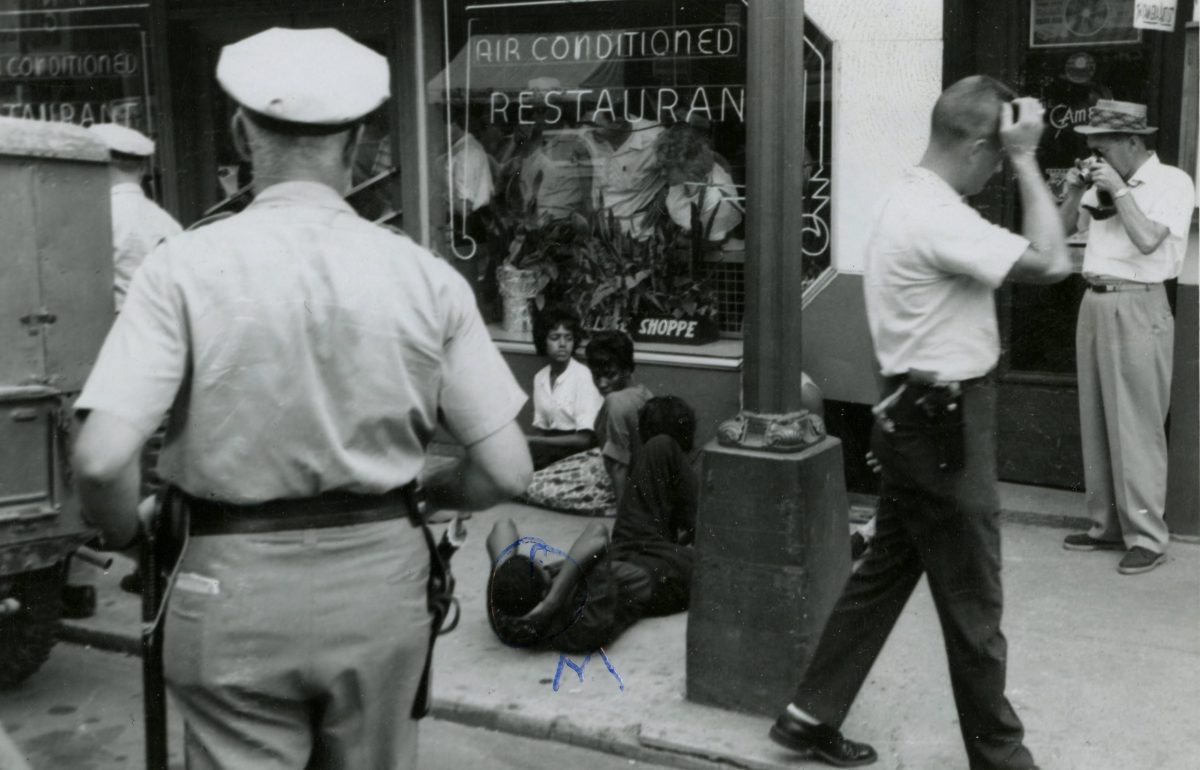
On July 26, 1963, student protesters on Main Street in Farmville stage a sit-in outside the College Shoppe restaurant, which refused to serve black patrons. Whites inside the restaurant look out the window as police approach the demonstrators.
In the summer of 1963, police watched people taking part in the ‘Program of Action’, a campaign for equality undertaken by the African-American community in Farmville, Virginia. Police photographed the peaceful protestors, intending their images to be used as evidence. Some protestors at the cameras. Other bowed their heads, looked away or shielded their faces as they walked past the sulking, menacing armed police. The tension is palpable. There were many arrests.
In 1963, Blacks make up roughly 40% of the population but there are no Afro-Americans in any public office, no Black police, firemen, managers or clerks on the public payroll.
Led by The Rev. L Francis Griffin, the protesters spoke out against the discriminatory practices of local businesses and churches, and Prince Edward County’s four-year long closure of public schools in defiance of court-ordered desegregation.
The Program of Action never resulted in the violence seen in Danville, Virginia and Birmingham, Alabama.
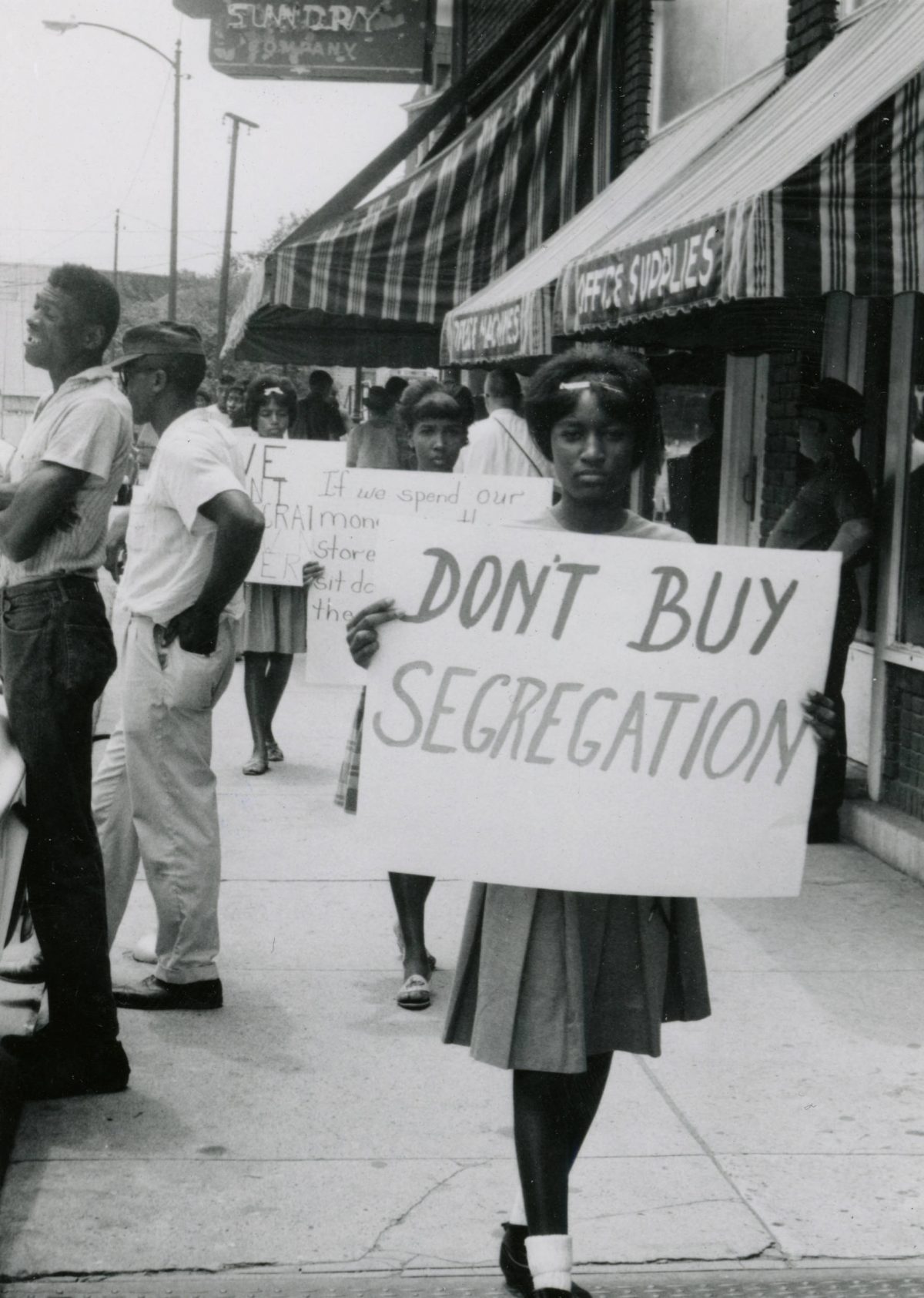
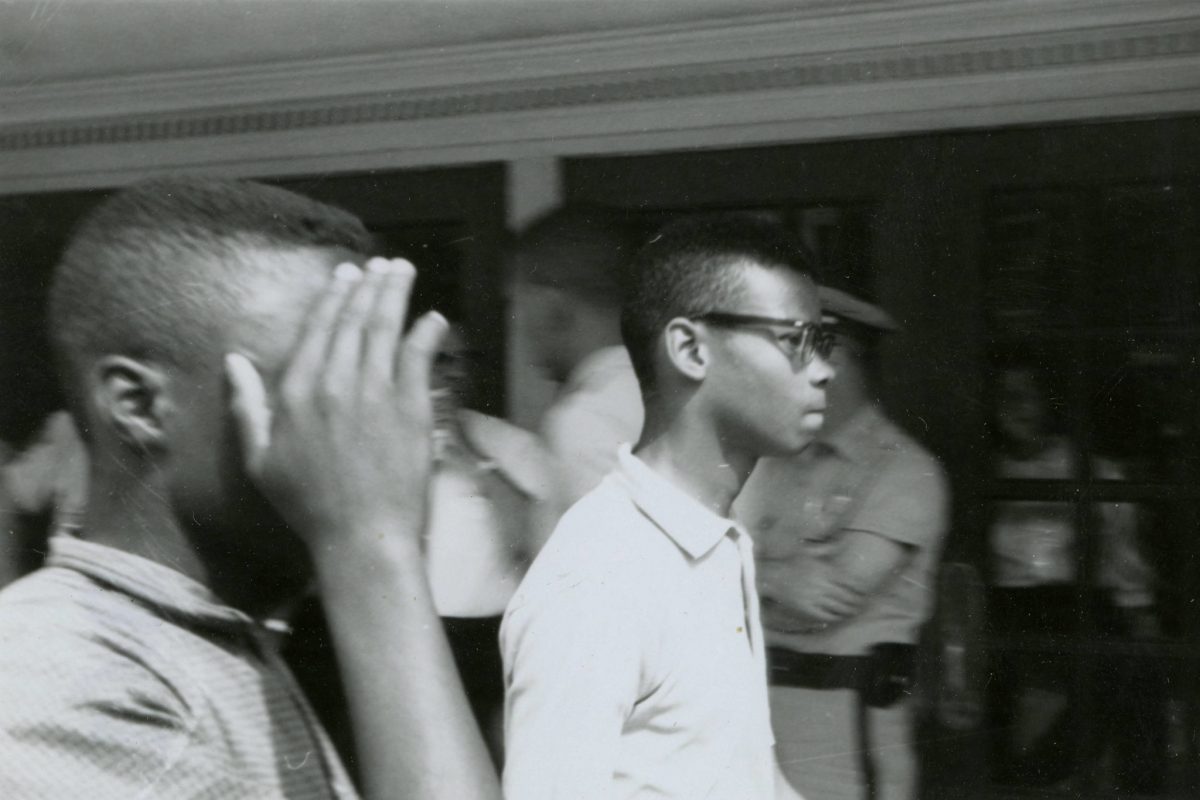
Carlton Terry at center with glasses. Marvin Walton covers face at left.
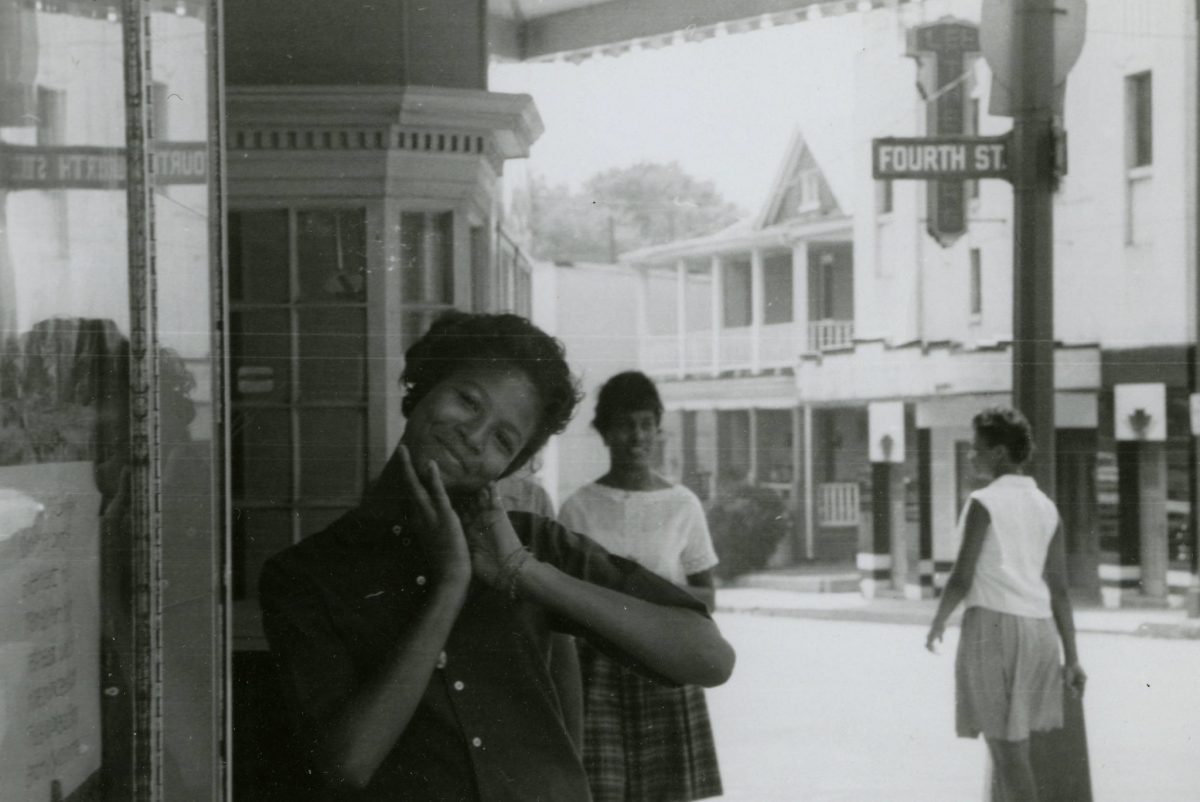
Public schools in Prince Edward County and its county seat, Farmville, had been closed since June 1959, when county officials refused to levy taxes to operate schools rather than follow federal court orders to desegregate. The state government had abandoned its policy of Massive Resistance, but Prince Edward County remained steadfast and became the only place in the nation without public education.
The National Association for the Advancement of Colored People (NAACP) in Allen v. County School Board of Prince Edward County and later Griffin v. County School Board of Prince Edward County had petitioned the federal judiciary to open the schools, but the case moved glacially through the courts.
African Americans in Prince Edward County faced a variety of additional obstacles, such as discriminatory hiring practices and de facto and de jure segregation. The two-month direct action campaign Griffin launched that summer included picketing along Main Street, sit-ins, kneel-ins, try-ins, and economic boycotts.
By summer’s end, the NAACP-sponsored Prince Edward Free Schools opened and students were at last able to go to school. The Free Schools opened on Monday, September 16, 1963, one day after the 16th Street Baptist Church bombing in Birmingham. The following year, following the Supreme Court ruling in ruling in Griffin v. County School Board of Prince Edward County, Prince Edward County public schools opened to all students.
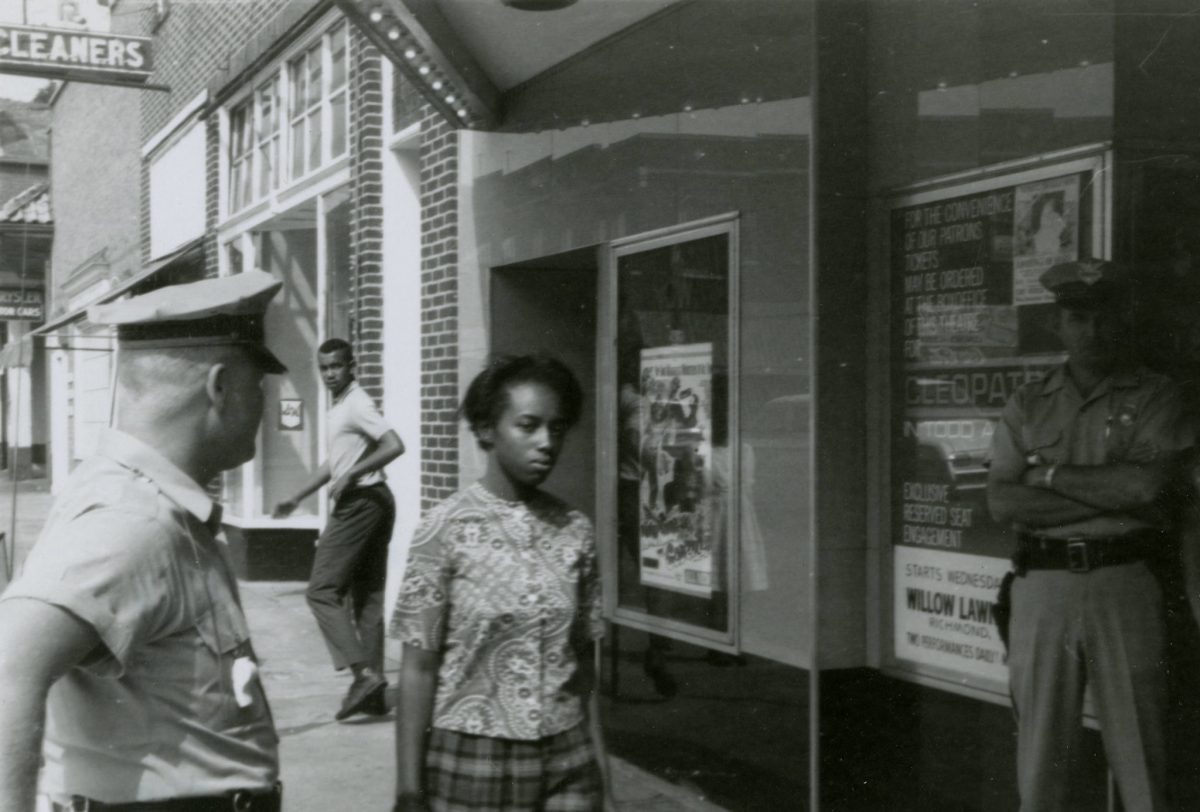
Gladys Lawson walking towards camera. L. Francis “Skip” Griffin, Jr. turning back towards camera. Eugene Overton at left.
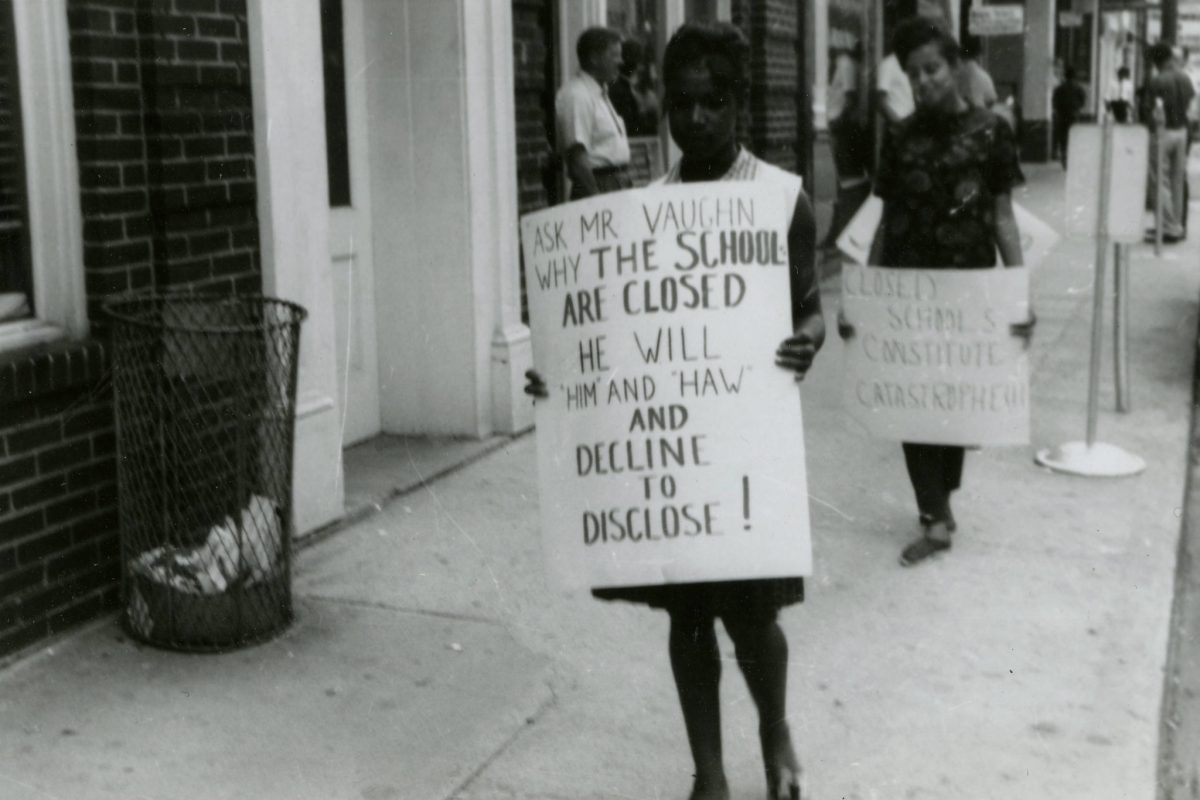
Phyllis Hicks, second in line, carries “Closed Schools…” sign.
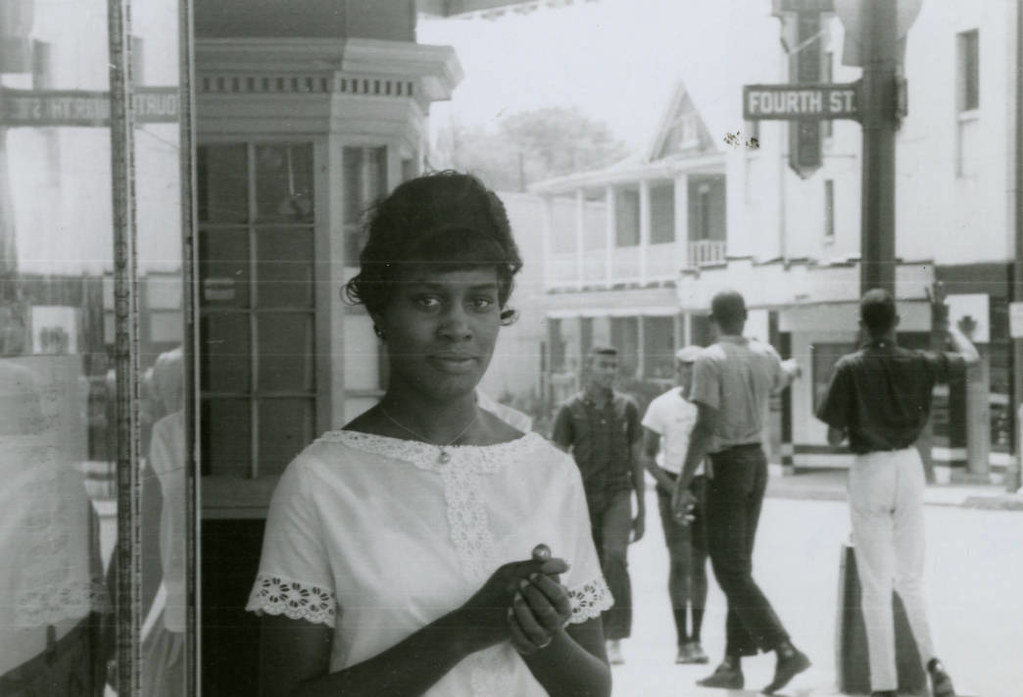
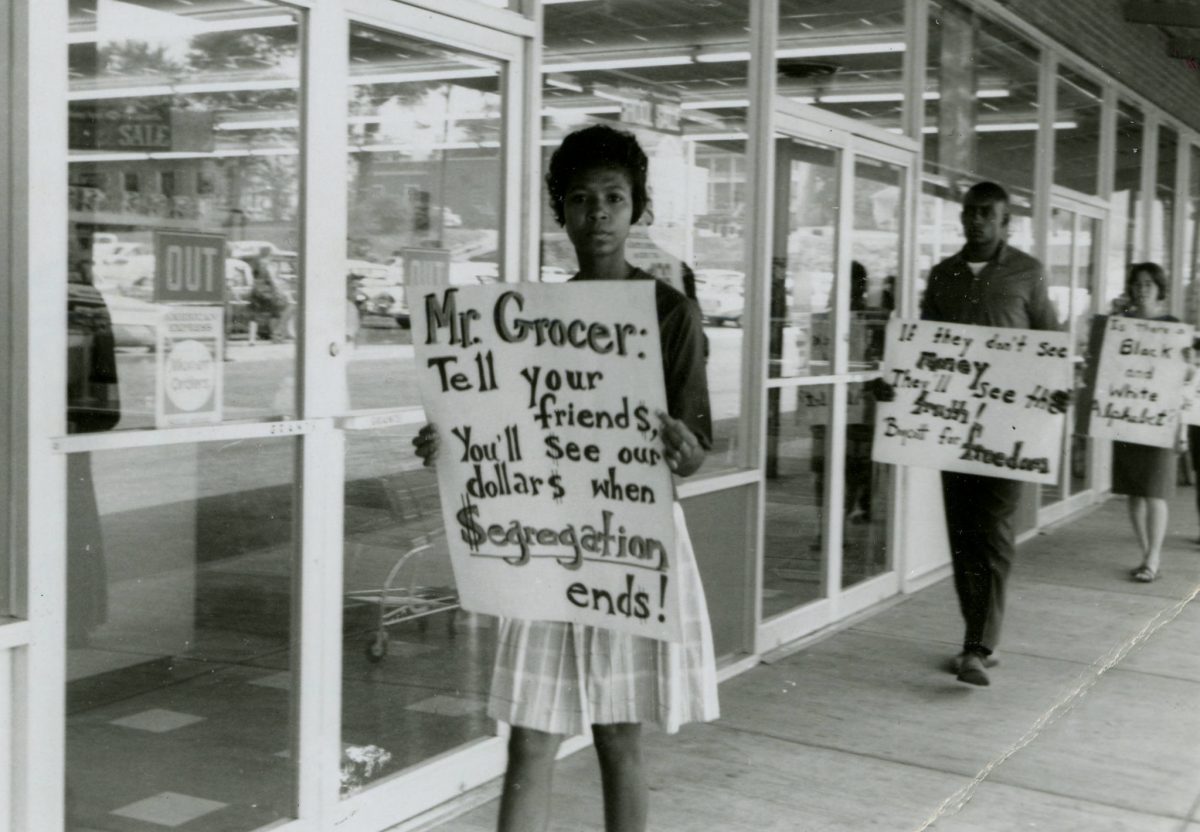
Protesters at Grants, Farmville Shopping Center, August 1963

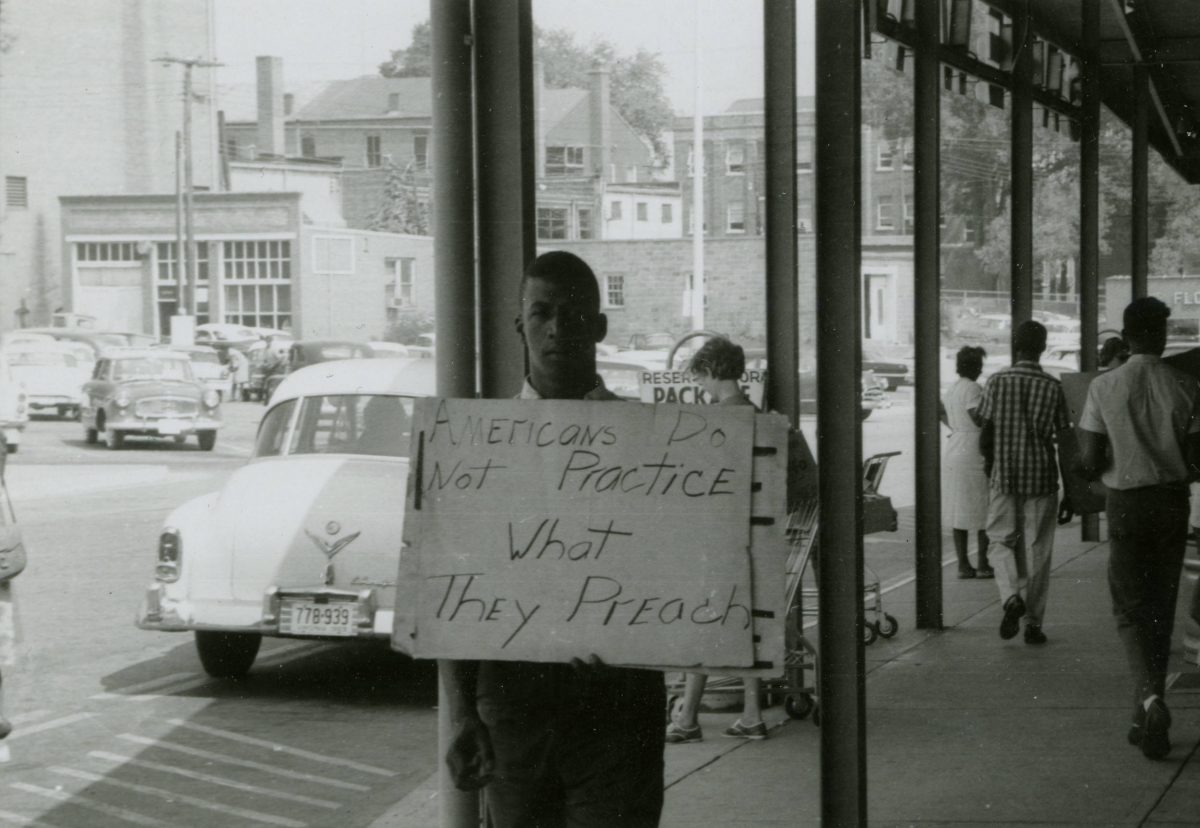
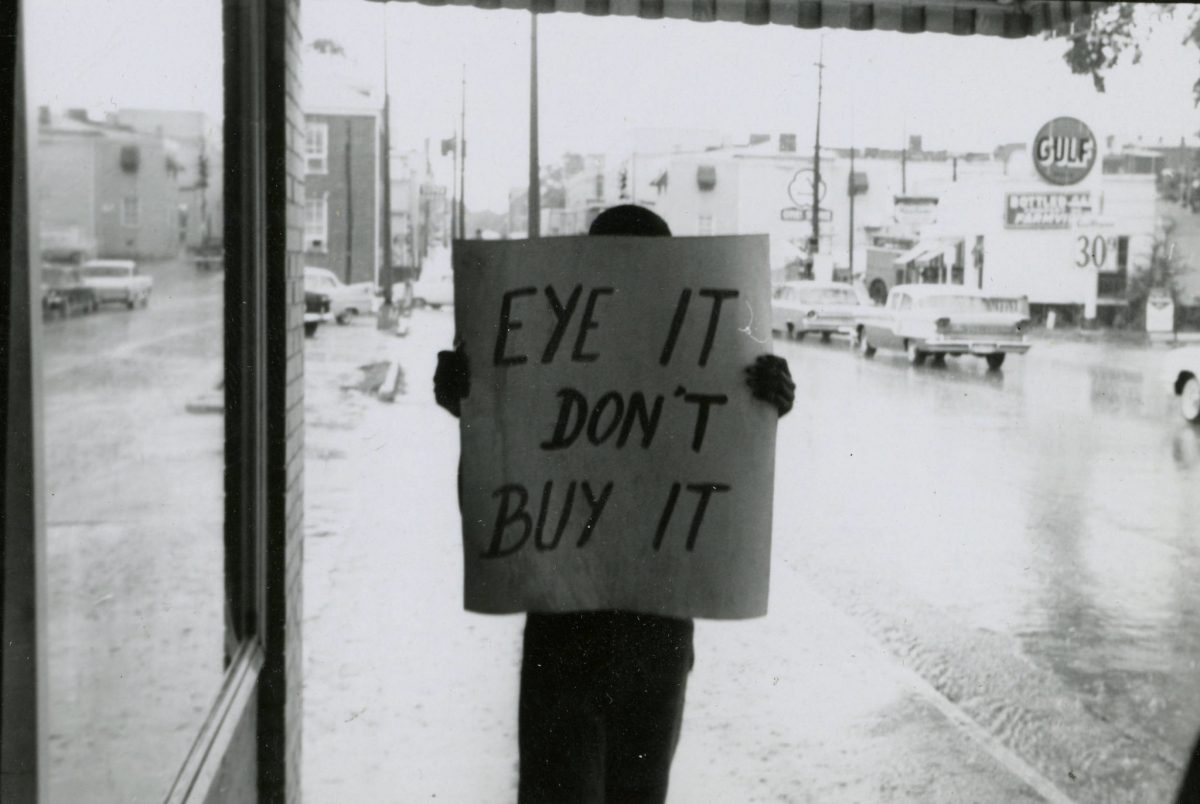
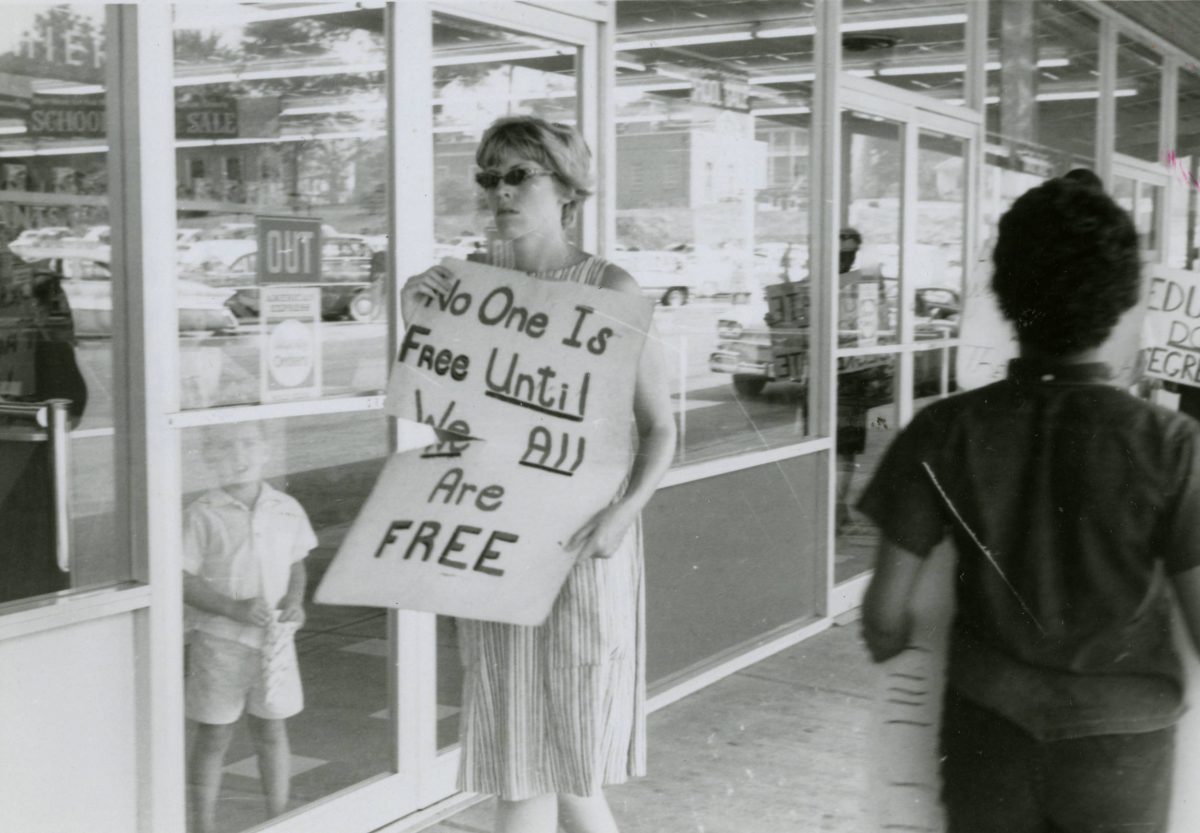
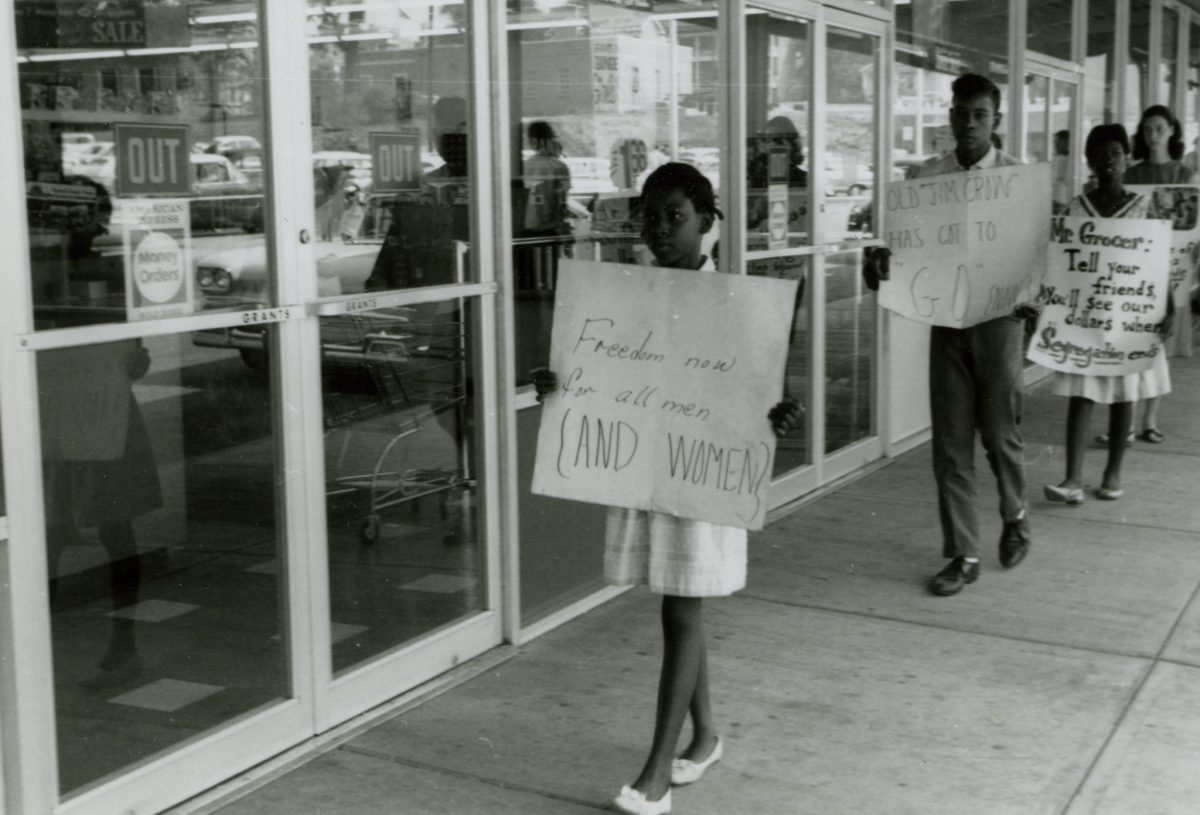
Freedom Now for all Men and Women. Protesters carry signs outside Grants store, Farmville Shopping Center, August 1963
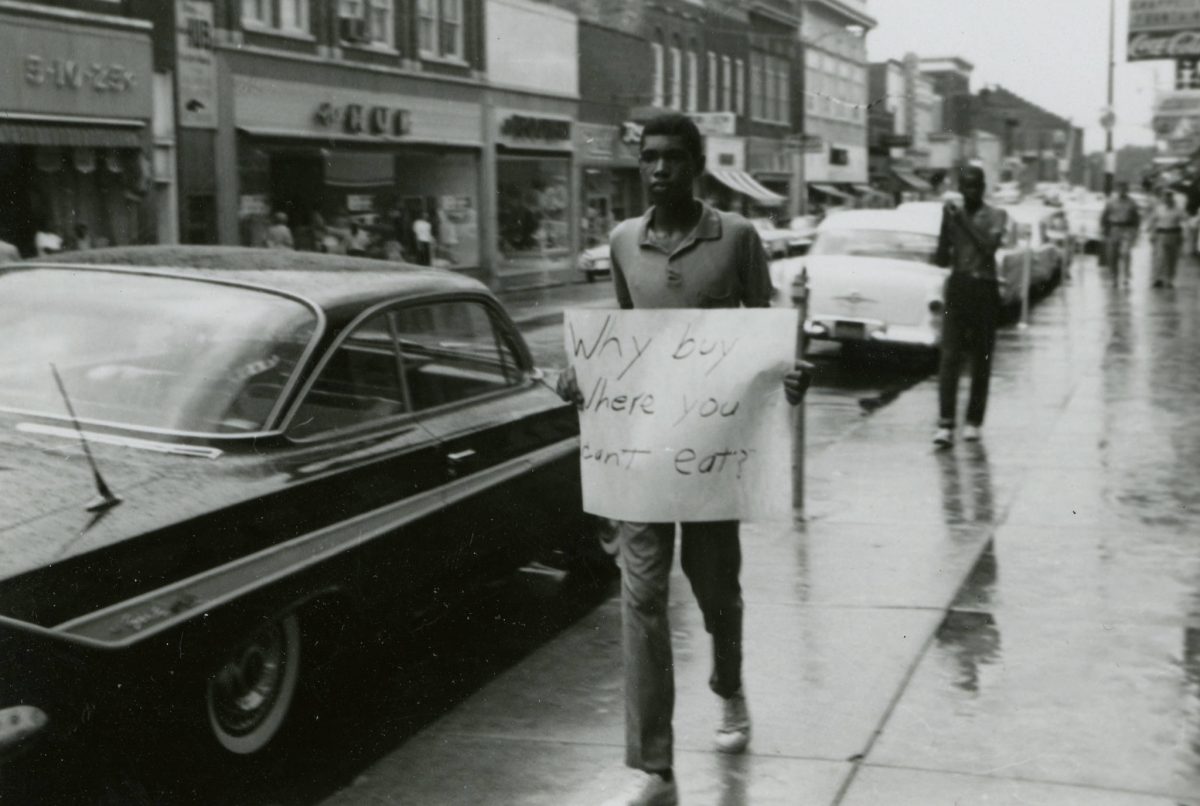
Why buy where you can’t eat? Student protesters on Main Street, Farmville, Va., July 1963

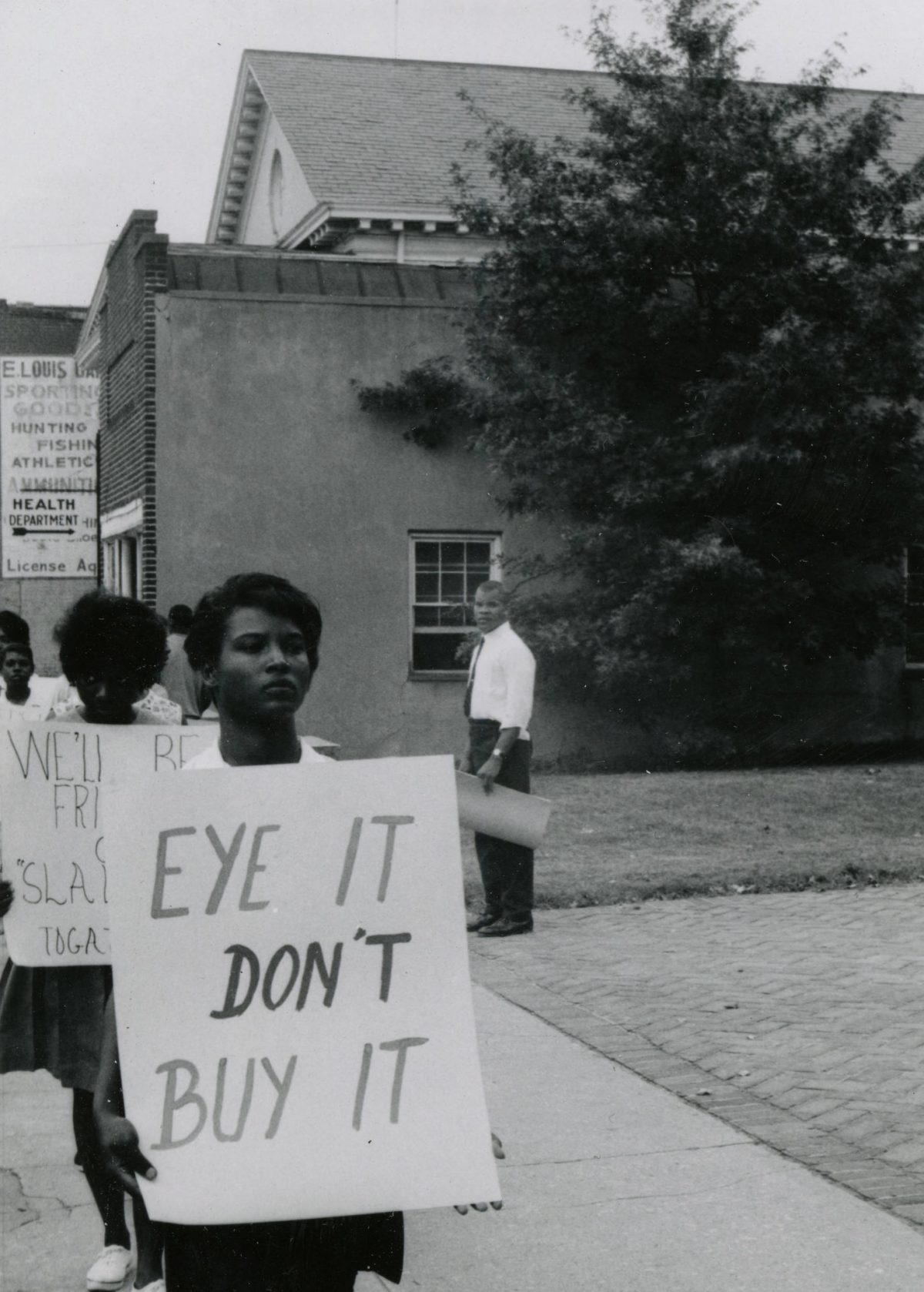
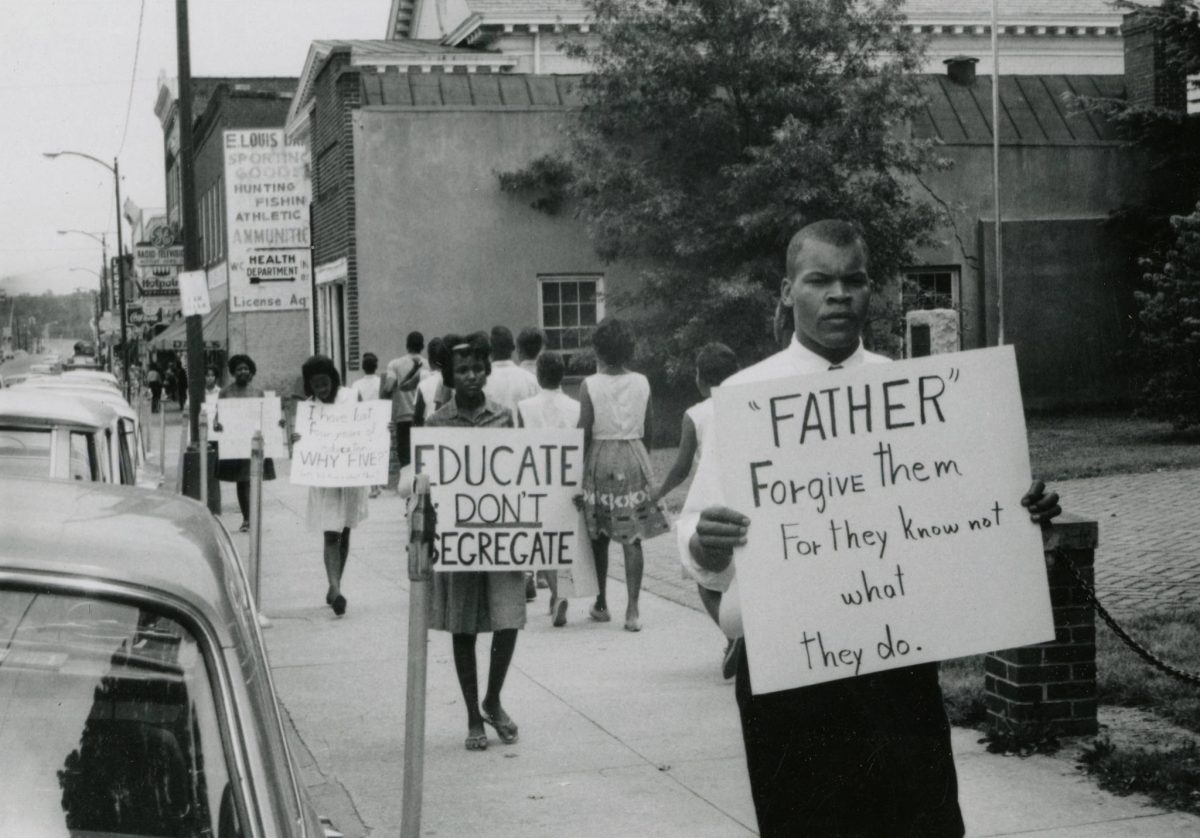
The Rev. Goodwin Douglas, pastor of Beulah AME, with “Father forgive them…” sign. Goodwin Douglas was the Presiding Elder of the Capitol District of the African Methodist Episcopal Church until his retirement. You can hear Presiding Elder Douglas speak in this video from 2012. (Message starts at 1:08:30). A video celebration of his life was posted by Reid Temple AME after Douglas’ passing in August 2016.
Fourth person in line behind the Rev. Douglas is Clara Gibson. Visible behind her is Sandra “Sandy” Stokes.
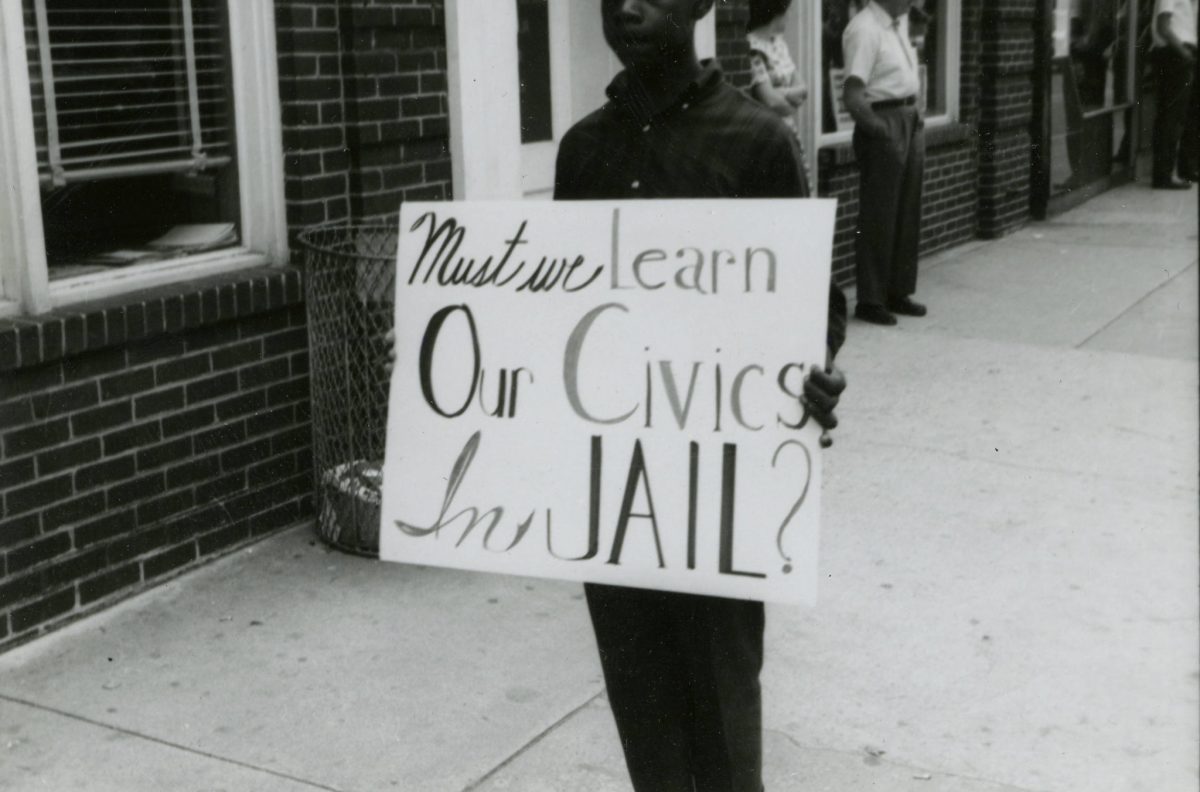
Timeline of Arrests:
July 25, 1963: The Farmville demonstrations begin when a group of seventy demonstrators picket downtown businesses, the courthouse, and the Farmville Shopping Center.
July 27, 1963: Ten demonstrators are arrested for loitering outside the College Shoppe luncheonette on Main Street in Farmville.
July 28, 1963: Twenty-three people are arrested for disturbing public worship at the Farmville Baptist Church, which has refused entry to blacks.
August 3, 1963: Eleven people are arrested in downtown Farmville for parading without a permit.
August 15, 1963: Judge William P. Hay Jr. of the Prince Edward County Juvenile and Domestic Court releases teenagers who had been arrested for picketing into the custody of their parents, but he orders them to observe a 10:00 p.m. curfew, refrain from disorderly picketing, maintain good behavior, and “attend school if such be possible.”
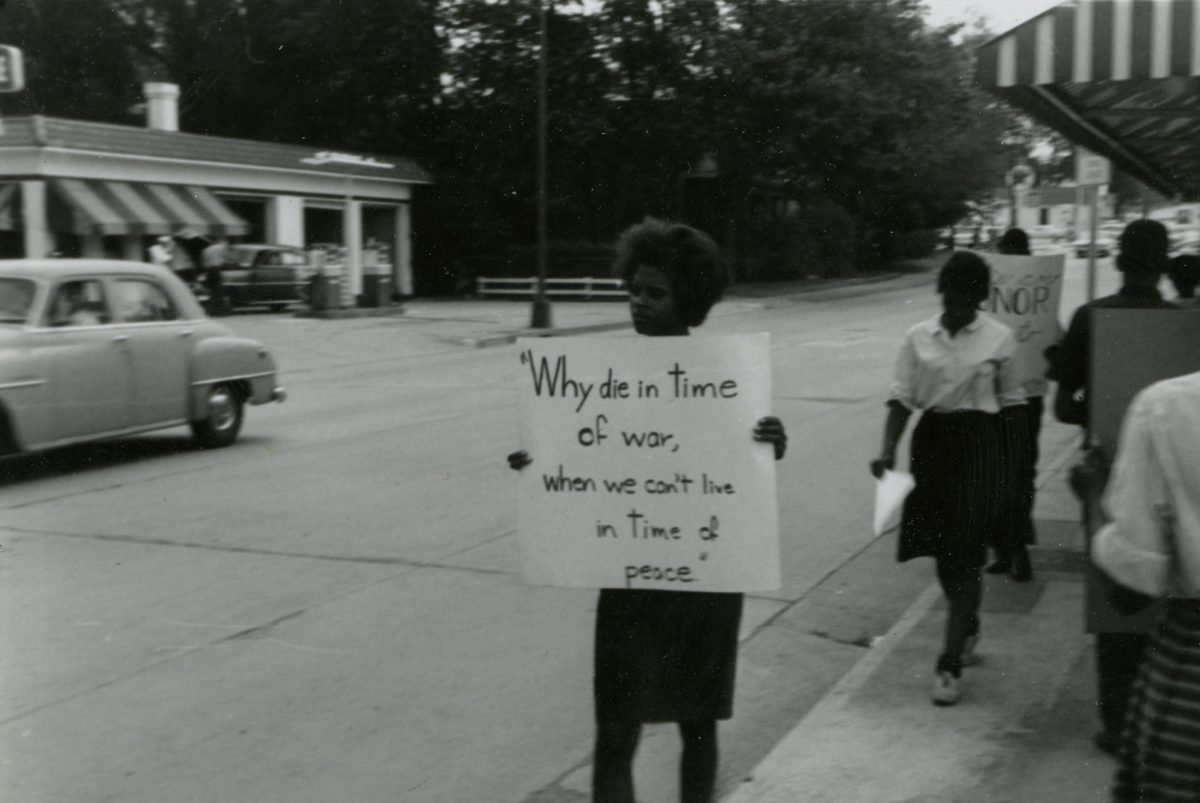
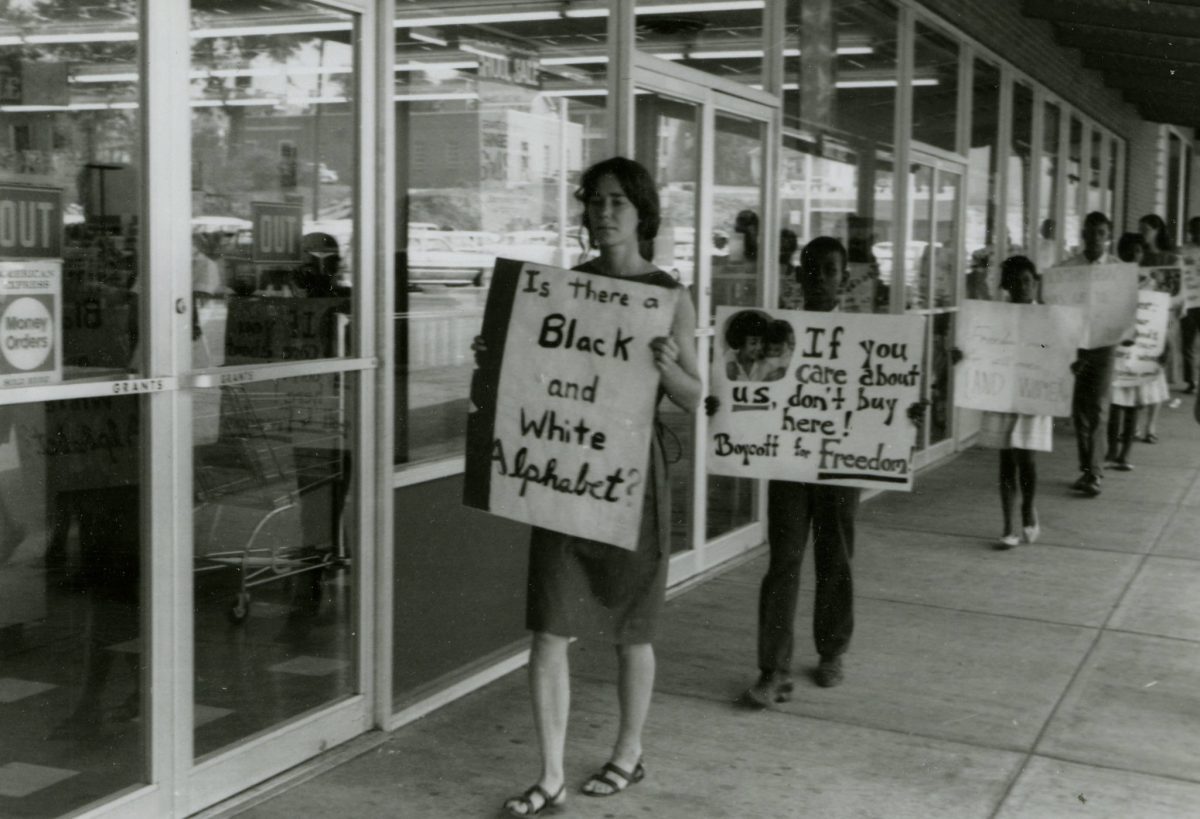
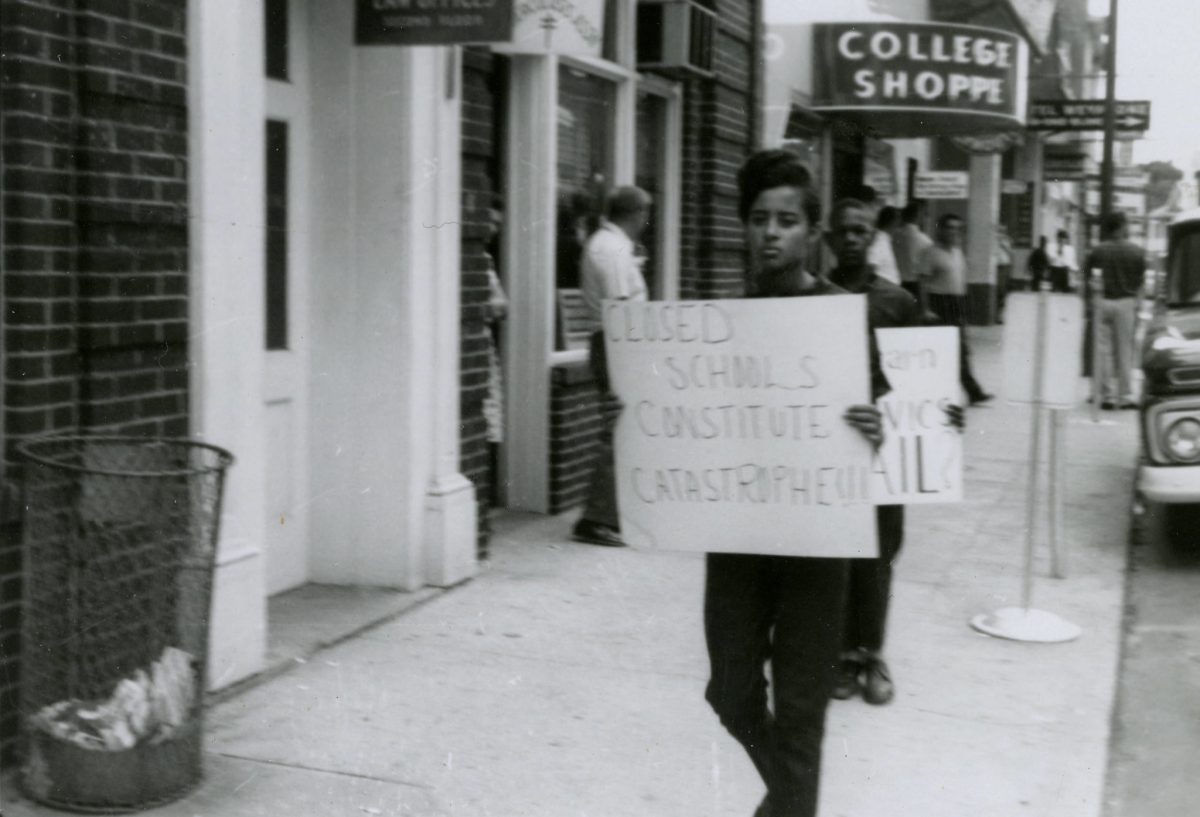
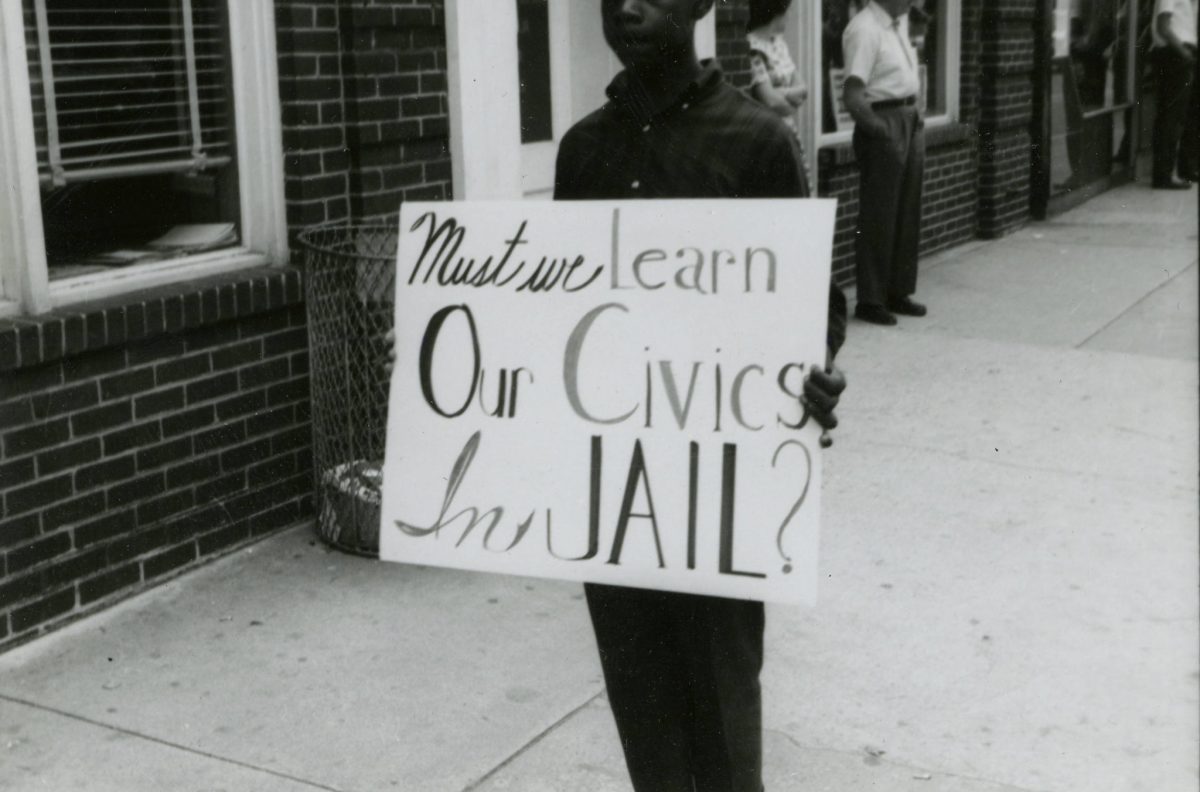
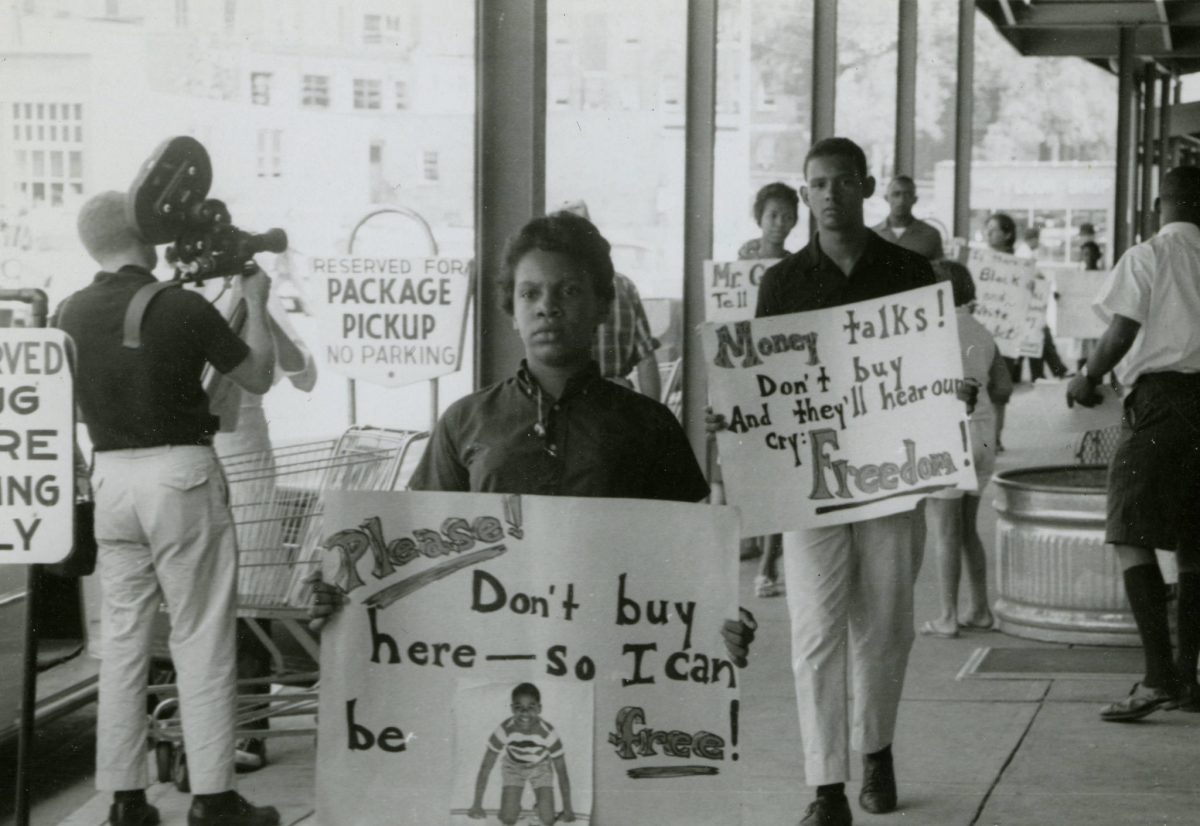
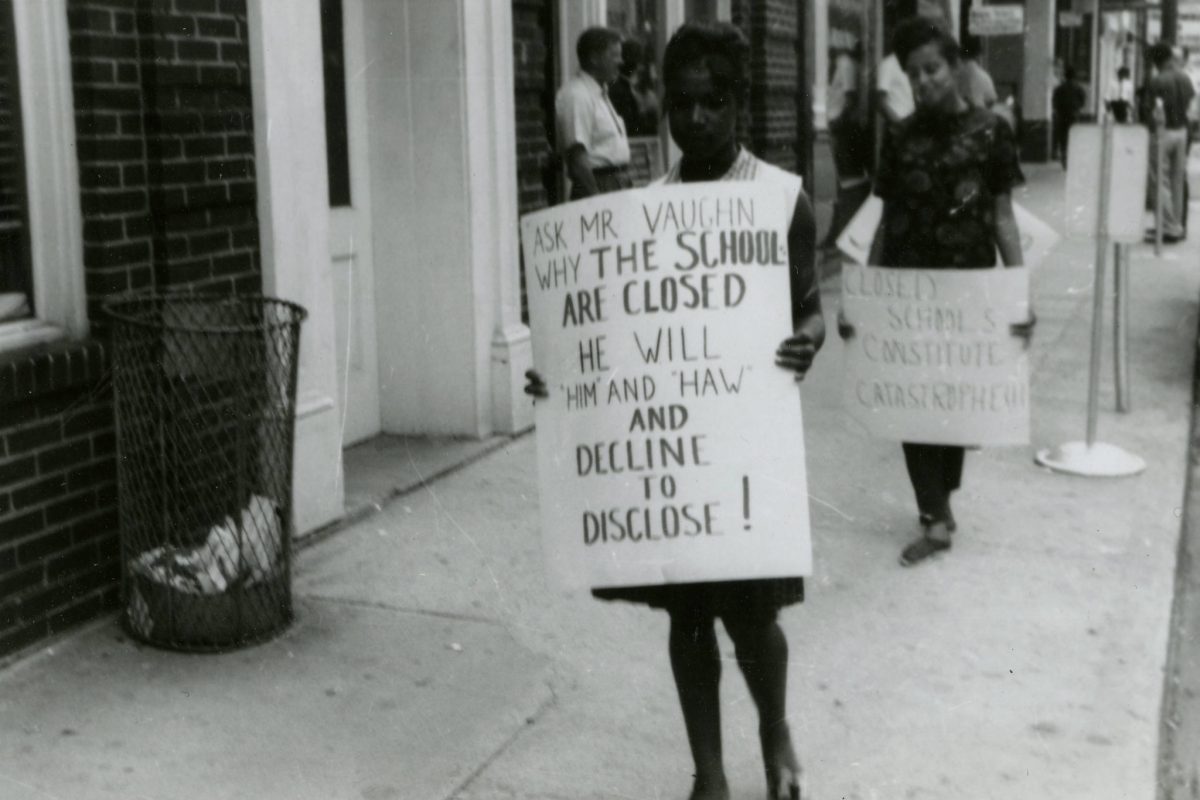
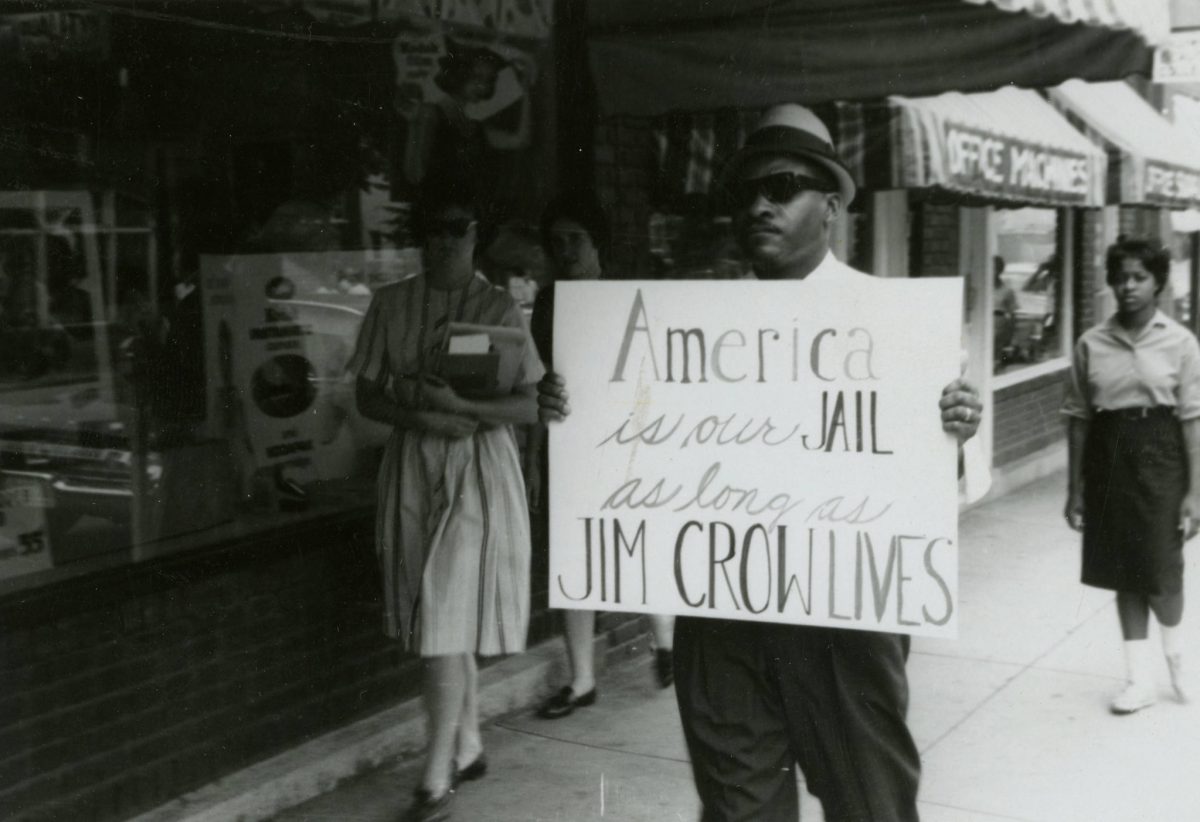
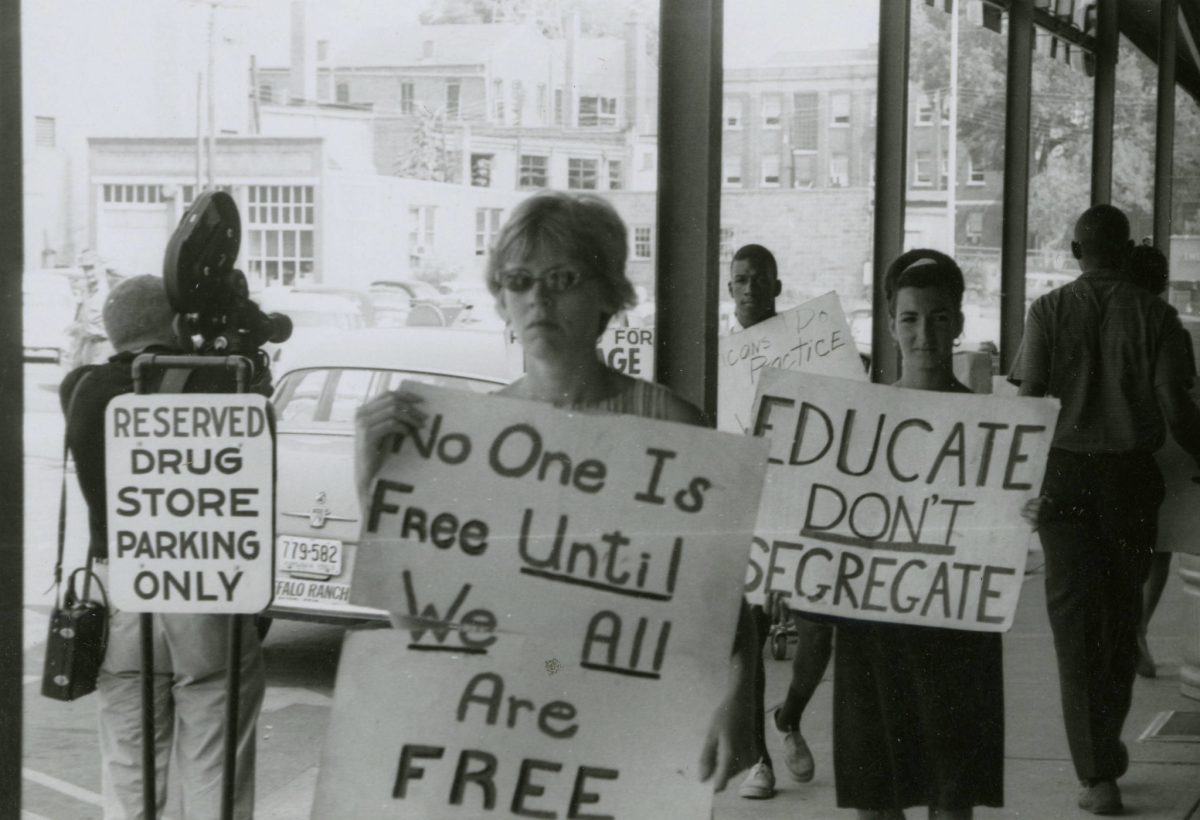
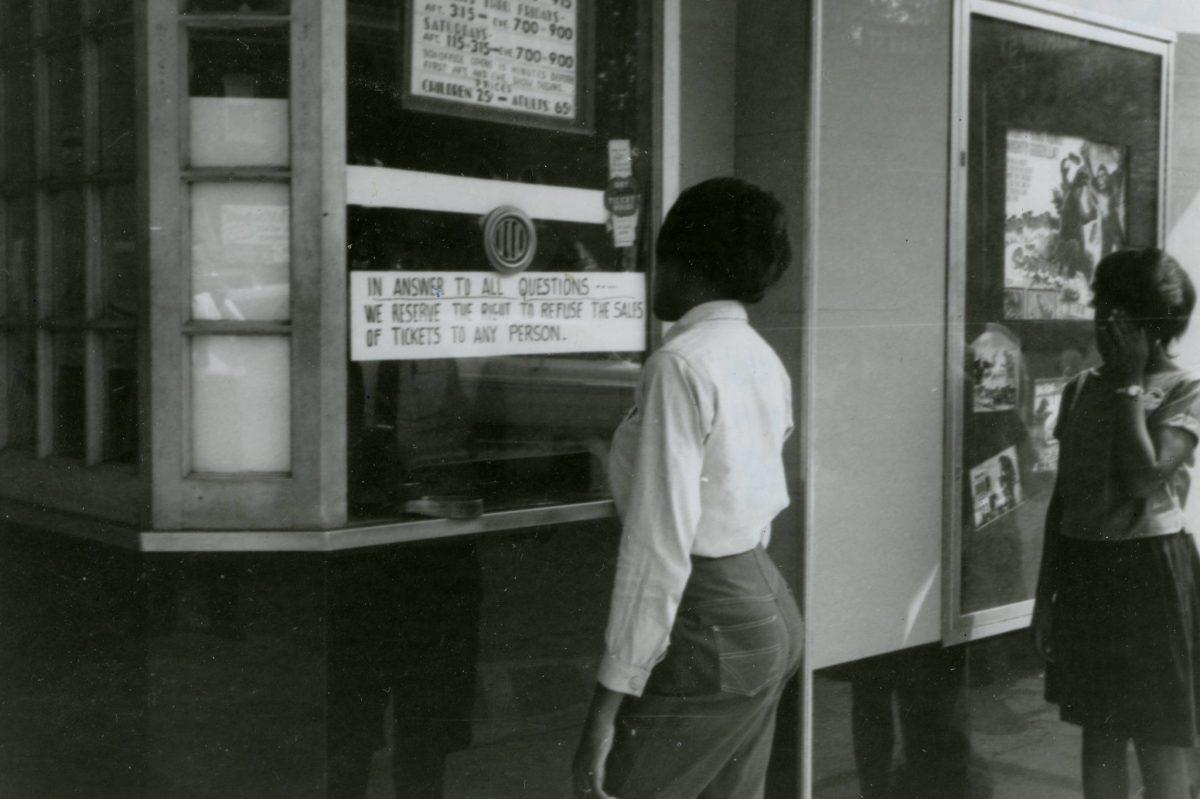
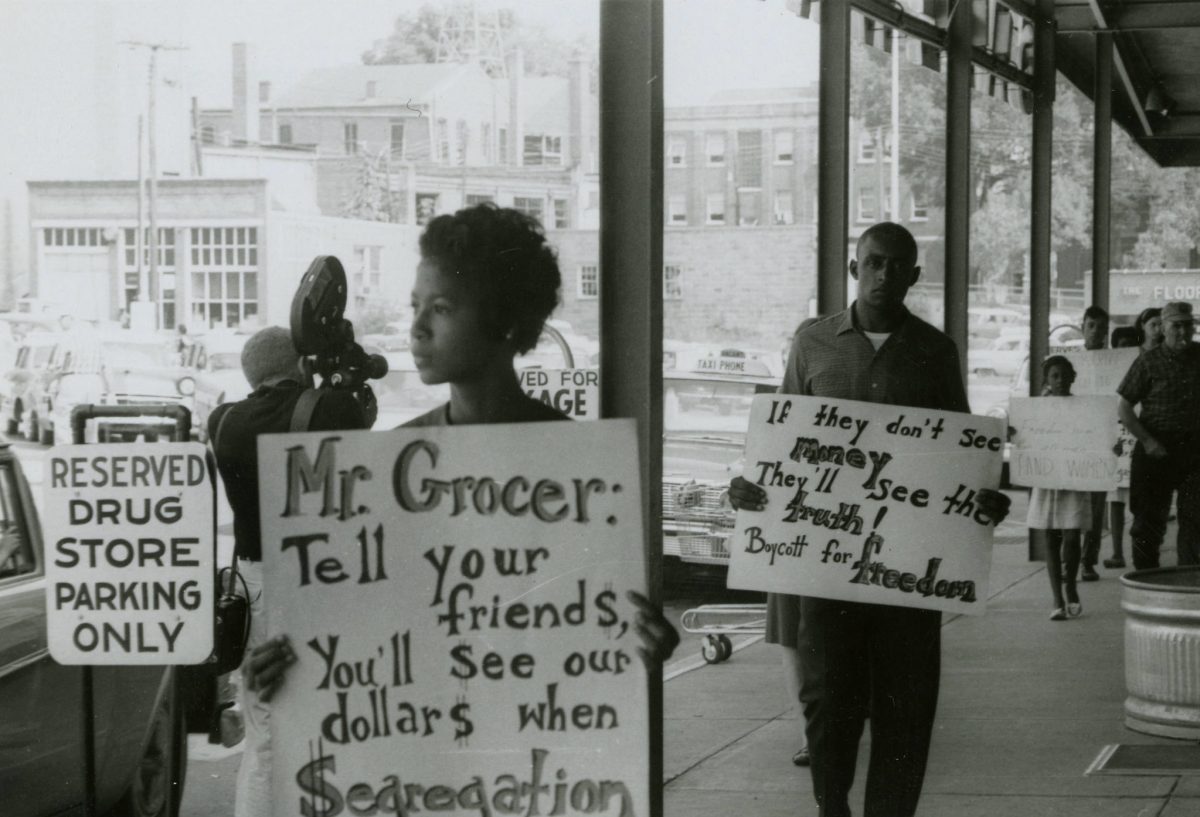
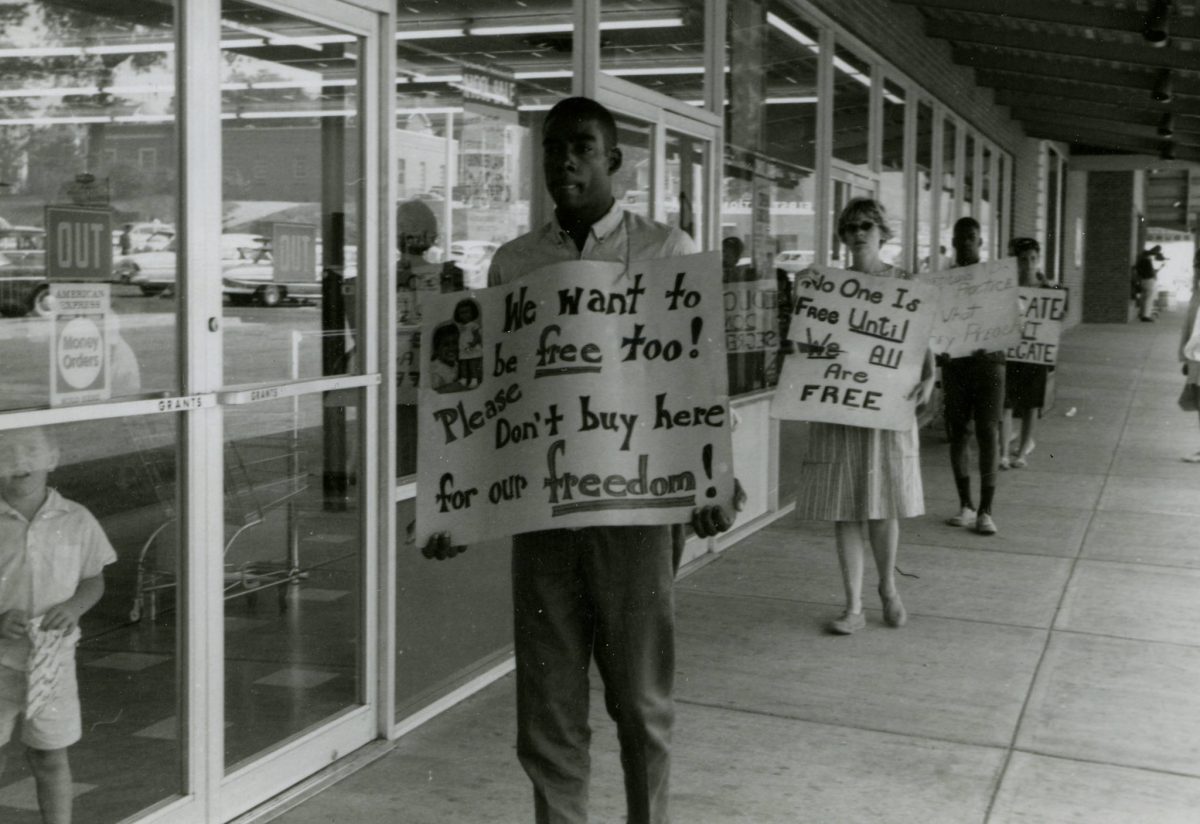
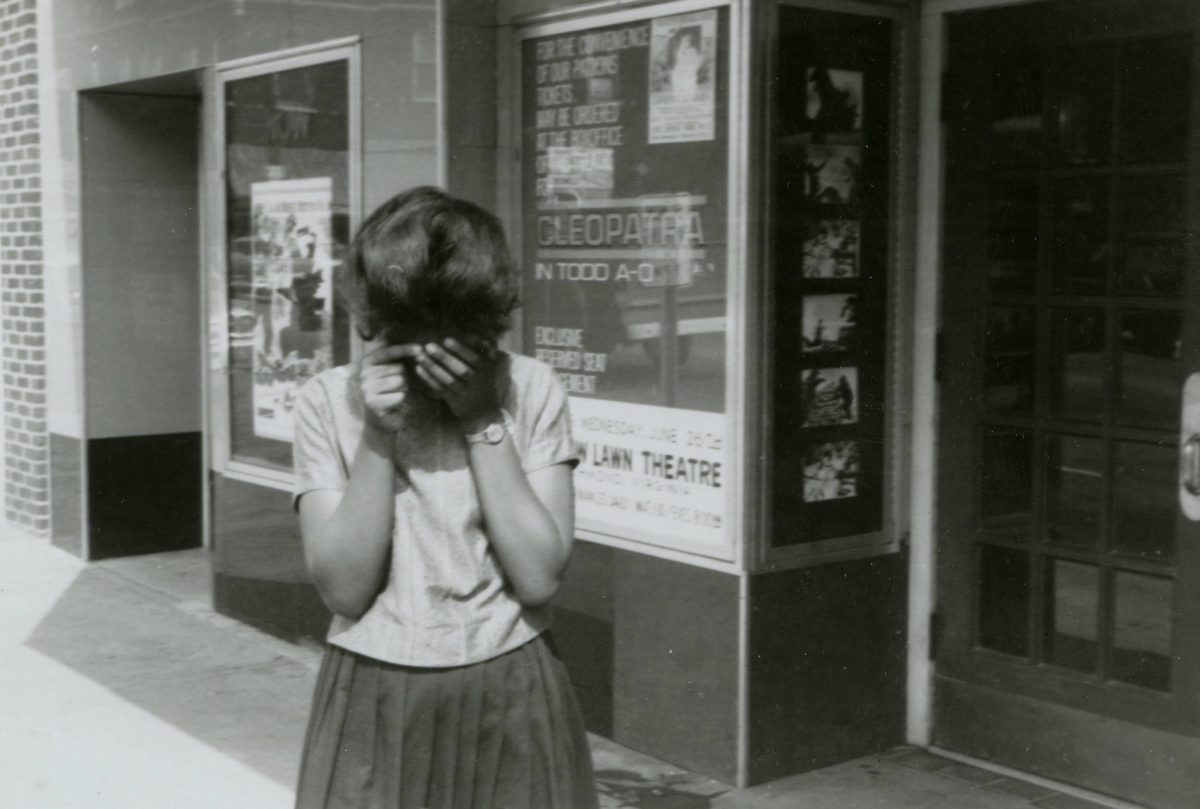
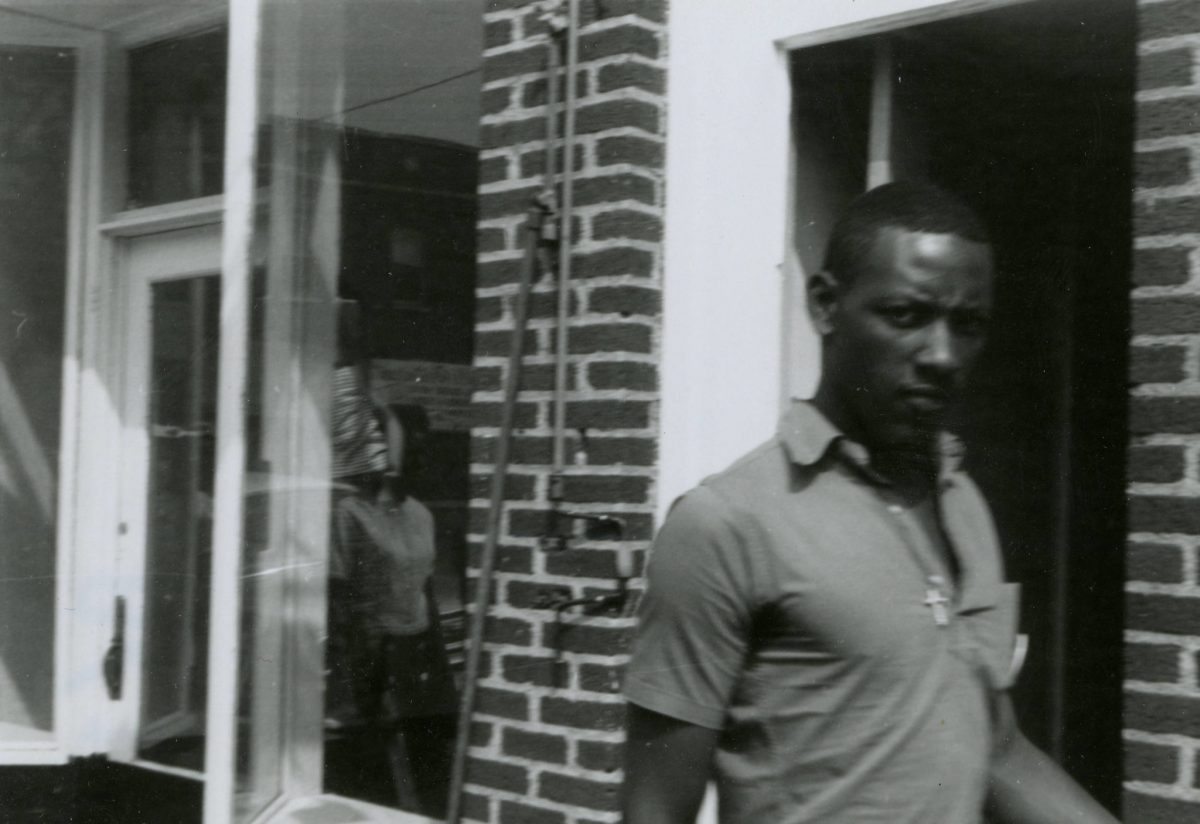
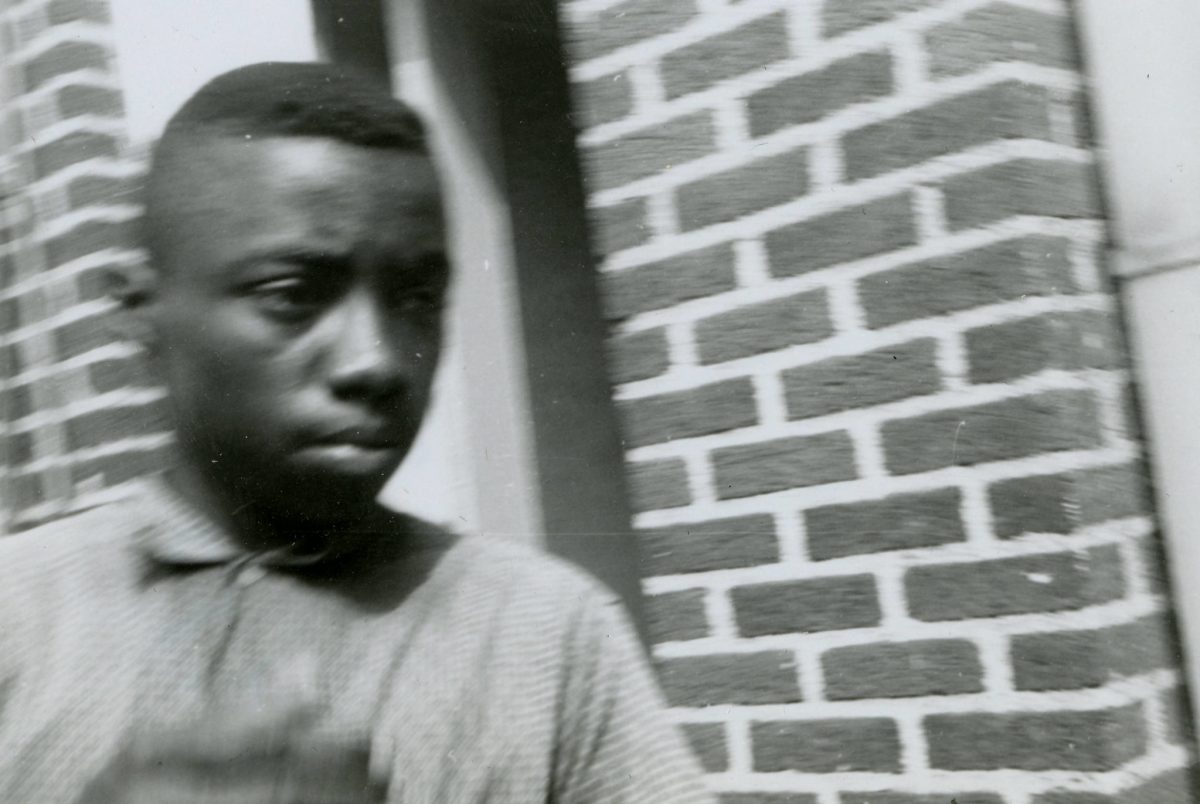
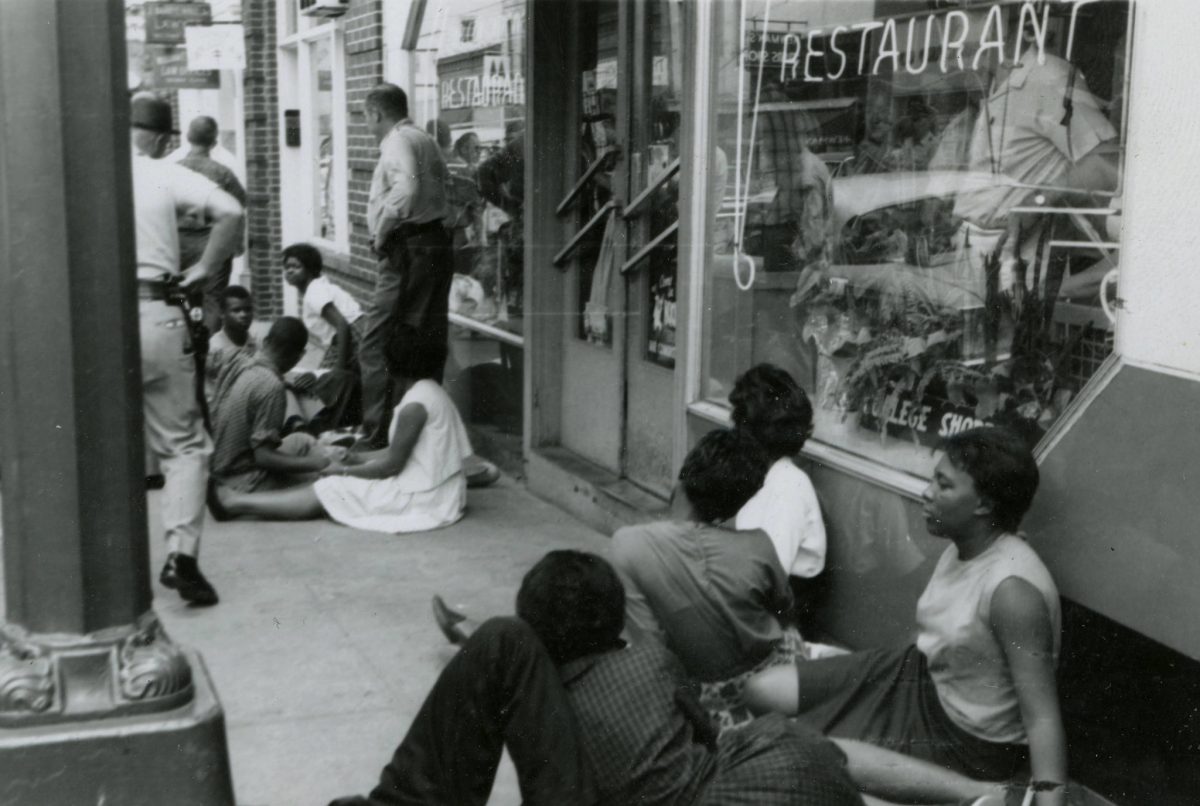
Clara Gibson at far right. Mary Fowlkes is next to her in light print skirt and dark top. Shelia Pride is against shop window in white blouse. Skip Griffin and Carlton Terry are seated on other side of door. Also believed to be among these protesters are LaNae “Kitty” Johnson, Melvin More, and the Rev. Richard Hale (pastor, St. James AME Church).
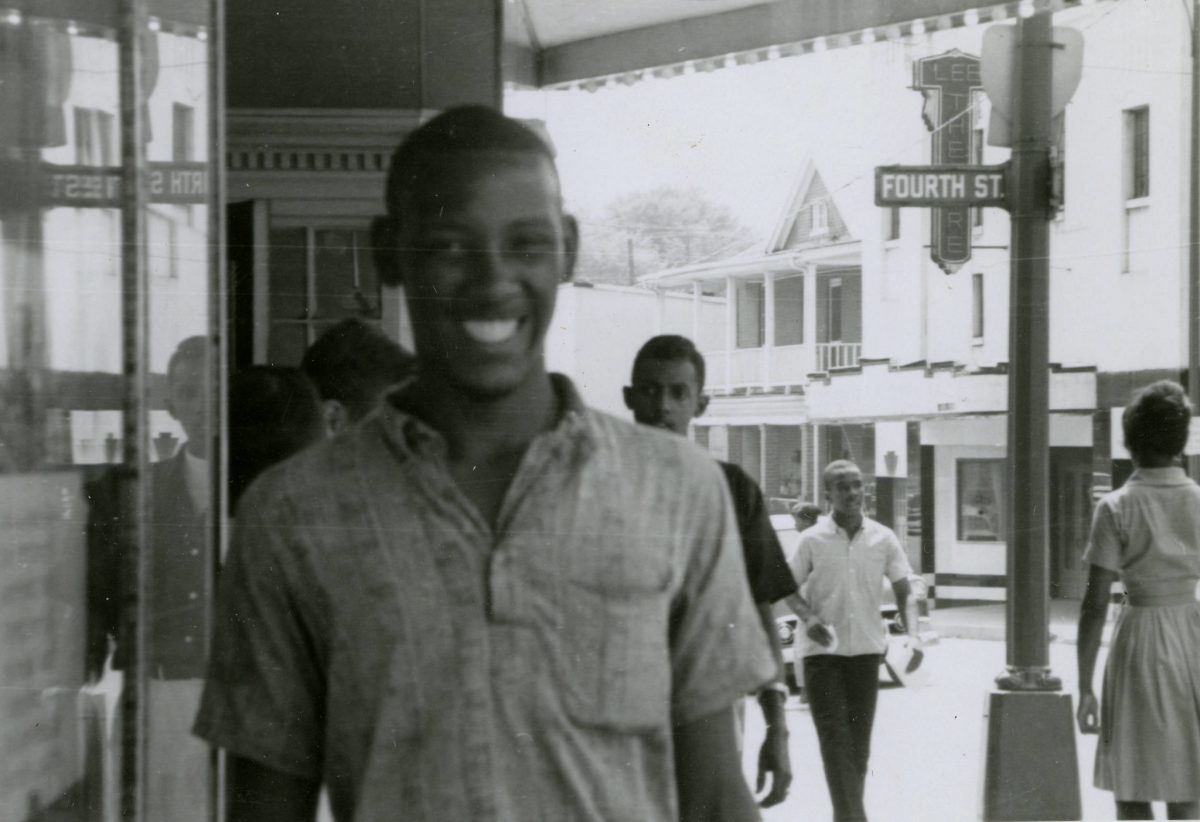
Via: VCU Libraries and Virgina
Would you like to support Flashbak?
Please consider making a donation to our site. We don't want to rely on ads to bring you the best of visual culture. You can also support us by signing up to our Mailing List. And you can also follow us on Facebook, Instagram and Twitter. For great art and culture delivered to your door, visit our shop.

